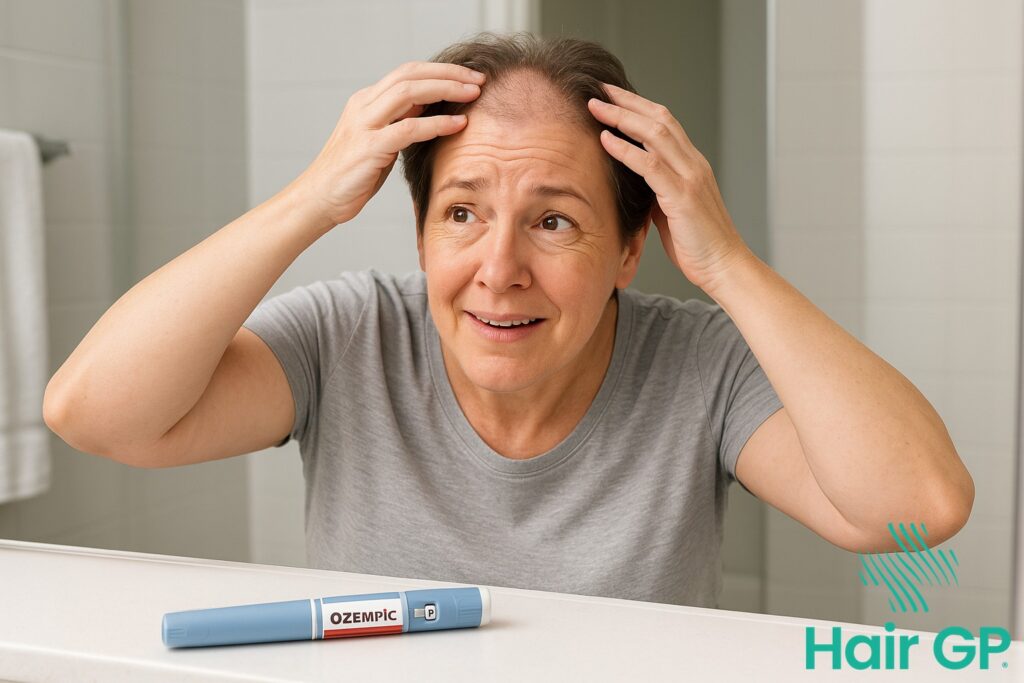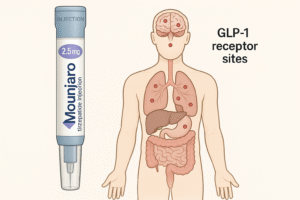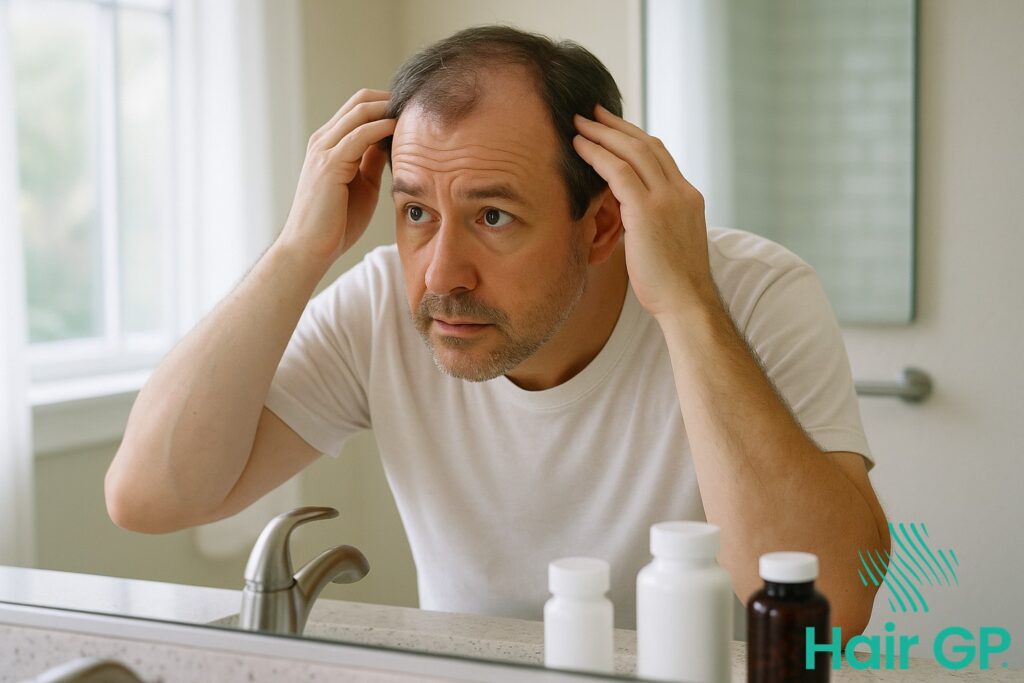Introduction
For millions seeking effective weight management solutions, Ozempic has emerged as a groundbreaking weight loss drug that delivers impressive results. However, alongside its celebrated benefits, many users are discovering an unexpected side effect: noticeable hair shedding. If you’re experiencing hair loss whilst on semaglutide medication, you’re not alone – and more importantly, there are evidence-based strategies to address this concern.
This comprehensive guide explores the intricate relationship between Ozempic treatment and hair health, providing clarity on why this phenomenon occurs and, crucially, what you can do about it. We’ll delve into the biological mechanisms that link rapid weight reduction to temporary hair shedding, examining how metabolic changes and nutritional shifts can impact your hair’s growth cycle.
Throughout this article, you’ll discover the science behind medication-induced hair changes, learn to identify different patterns of shedding, and understand which individuals may be more susceptible to this side effect. We’ll provide practical, actionable advice on optimising your nutrition, implementing protective hair care routines, and working with healthcare providers to balance your weight loss goals with maintaining healthy hair.
Whether you’re considering starting Ozempic, currently experiencing hair loss during treatment, or simply want to be prepared, this guide offers reassuring, evidence-based information to help you navigate this challenge. Remember, for most people, hair loss associated with Ozempic is temporary and manageable with the right approach.
Key Takeaways – TL/DR
- Hair loss from Ozempic is typically temporary and linked to rapid weight loss causing telogen effluvium
- Most patients experience hair shedding 3-4 months after starting treatment due to nutritional deficiencies
- Proper nutrition, supplements, and gradual weight loss can minimize hair loss while taking Ozempic
- Hair growth usually resumes within 6-9 months as the body adjusts to weight changes
Understanding the Ozempic-Hair Loss Connection
When taking Ozempic for weight management, the connection between this medication and hair loss stems from multiple physiological factors. As one of the most prescribed weight loss medications, Ozempic (semaglutide) works by mimicking the GLP-1 hormone, which regulates appetite and slows gastric emptying. This mechanism leads to significant calorie restriction and subsequent rapid weight loss – the primary trigger for hair shedding in many users.
The phenomenon of losing hair during significant weight reduction, known as telogen effluvium, occurs when the body perceives rapid weight loss as a form of physiological stress. This stress pushes hair follicles prematurely into the resting phase of their growth cycle, resulting in increased hair shedding approximately 2-3 months after the initial weight loss begins. Additionally, the dramatic reduction in caloric intake often accompanying Ozempic use can lead to nutritional deficiencies, particularly in protein, iron, and essential vitamins crucial for healthy hair growth.
The metabolic changes induced by semaglutide medication compound these effects. As the body rapidly adapts to new energy levels and altered nutrient absorption patterns, hair follicles – being non-essential tissues – receive fewer resources, making reported hair loss a relatively common experience amongst users.
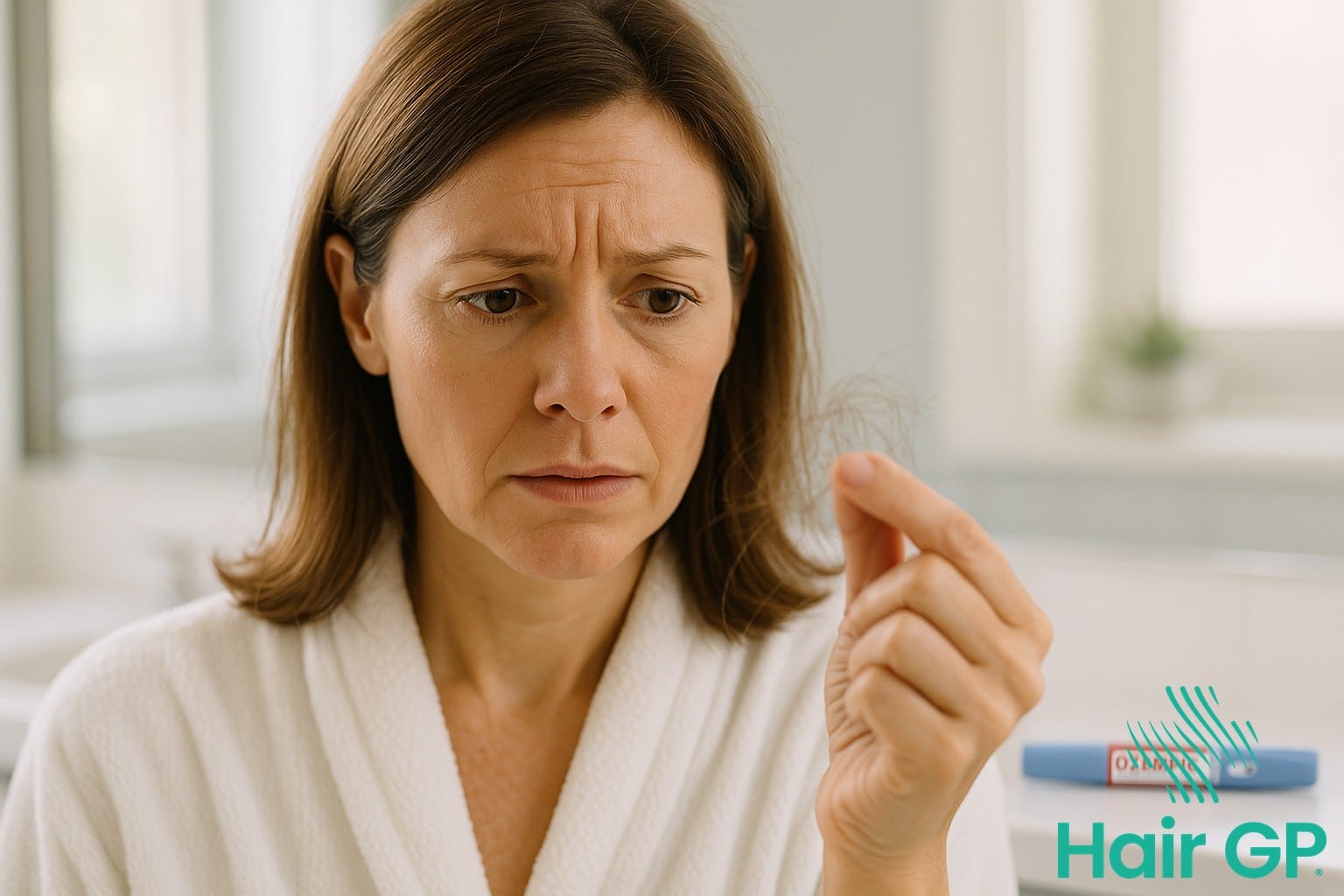
The Science Behind Hair Loss from Weight Loss Medications
Rapid weight loss from medications like Ozempic can trigger significant hair shedding through disruption of normal hair growth cycles. Understanding these biological mechanisms helps explain why hair loss occurs and why it’s typically temporary.
How Telogen Effluvium Works
Telogen effluvium represents the most common form of hair loss associated with rapid weight loss [1]. During this process, metabolic stress causes hair follicles to prematurely enter the telogen phase, where hair stops growing and eventually sheds. Normally, only 10-15% of scalp hairs remain in this resting phase, but metabolic stress can push up to 30% of follicles into telogen simultaneously.
The characteristic 3-4 month delay between the triggering event and visible shedding occurs because follicles complete their current growth cycle before entering the telogen phase. Fortunately, this condition is reversible once the underlying stress resolves and normal hair growth cycle resumes [2].
Nutritional Impact on Hair Follicles
Rapid weight loss creates significant nutritional deficiencies that directly impact hair health. Hair follicles require substantial protein intake, as keratin comprises 95% of hair structure. When caloric restriction limits protein availability, the body prioritises essential functions over hair production.
Additionally, micronutrient depletion affects follicular metabolism. Iron, zinc, biotin, and B-vitamins play crucial roles in hair synthesis. Severe caloric restriction depletes these reserves, whilst hormonal changes from rapid weight loss compound the effect by altering thyroid function and increasing cortisol levels, further disrupting normal follicular activity.
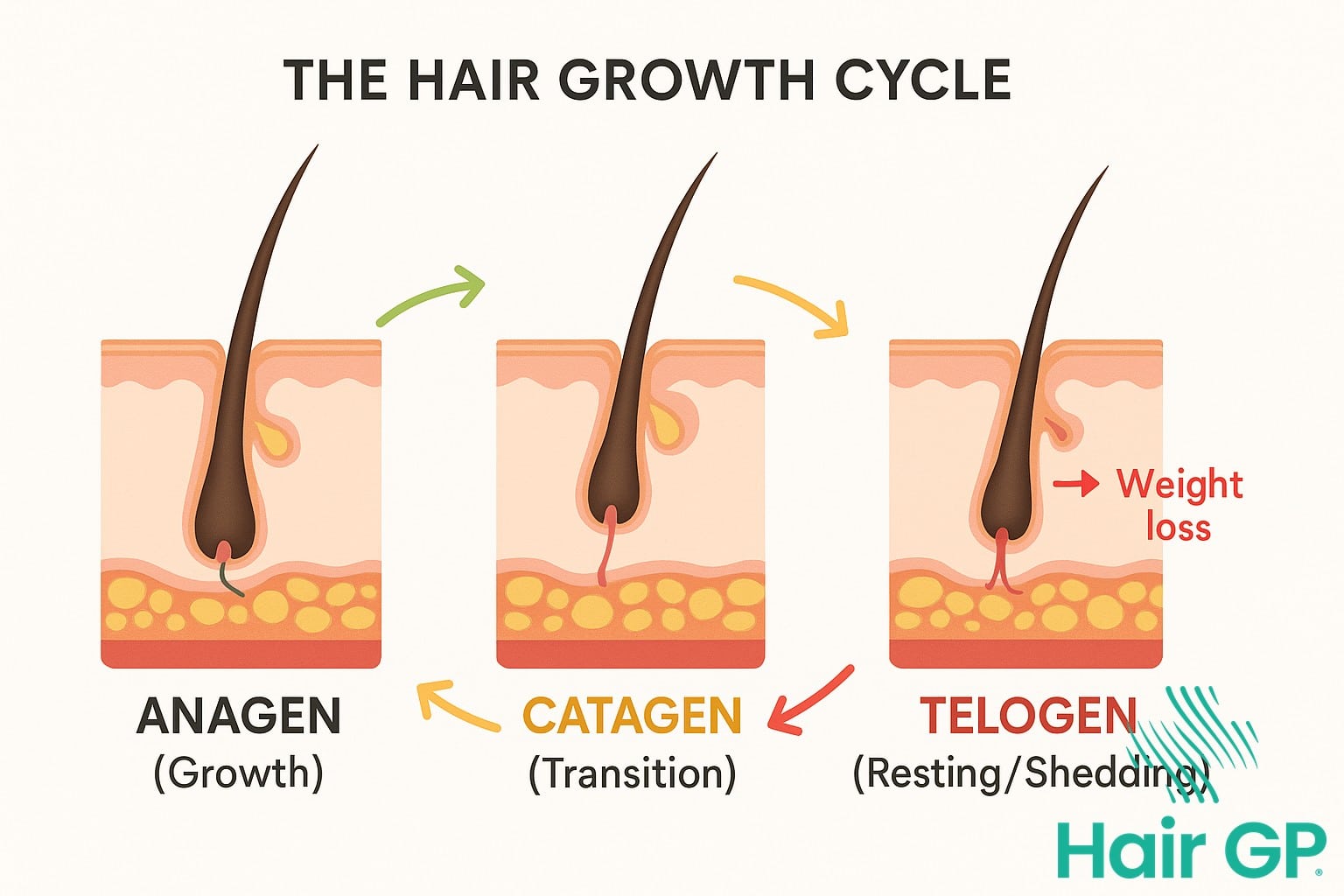
Common Types of Hair Loss Associated with Ozempic
Understanding the different types of hair loss that may occur whilst taking Ozempic is crucial for identifying whether your experience requires medical attention or is simply a temporary adjustment period. Most users who experience hair thinning encounter reversible conditions, though the medication may occasionally reveal underlying hair loss issues that were previously unnoticed.
Temporary vs. Permanent Hair Loss
The most common form of hair loss associated with Ozempic is telogen effluvium, a temporary hair loss condition that typically resolves within three to six months. This type of shedding occurs when hair follicles prematurely enter the resting phase due to metabolic stress or rapid weight loss. Unlike permanent hair loss, telogen effluvium doesn’t damage follicles and hair typically regrows fully. However, Ozempic may unmask pre-existing androgenetic alopecia, a genetic form of permanent hair loss that affects both men and women. If you notice thinning hair persisting beyond six months or developing distinct patterns, consultation with a healthcare provider becomes essential.
Recognising Hair Loss Patterns
Diffuse shedding throughout the scalp characterises medication-related alopecia, with increased hair fall during washing or brushing. This differs from focal thinning, which appears in specific areas like the crown or hairline. General thinning affects the entire scalp uniformly, whilst pattern-specific loss suggests underlying conditions. Be concerned if you notice bald patches, scalp irritation, or hair loss exceeding 100-150 strands daily for extended periods. Document your hair loss pattern through photographs to help healthcare providers assess whether intervention is necessary.
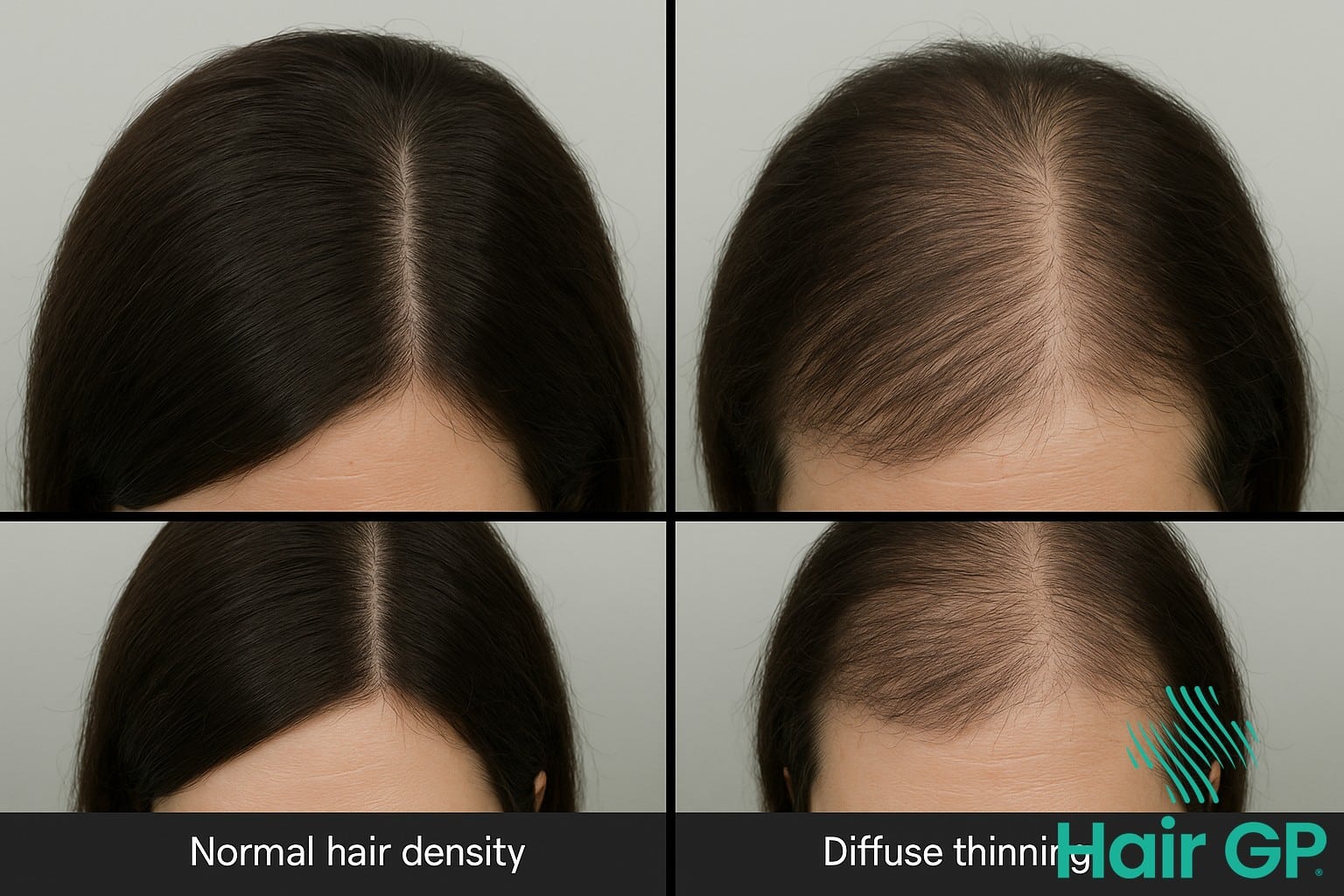
Risk Factors and Who’s Most Affected
Several factors can increase your likelihood of experiencing hair loss whilst taking Ozempic, and understanding these risks helps predict whether you might be affected. Individuals with pre-existing nutritional deficiencies, particularly in iron, zinc, or B vitamins, face heightened vulnerability as drastic weight loss can further deplete these essential nutrients crucial for hair health.
The rate of weight reduction plays a critical role in determining hair loss risk. Those experiencing significant weight loss exceeding 20% of body weight within six months are more likely to develop telogen effluvium. Patients with obesity who lose weight rapidly may paradoxically affect more hair follicles than those losing weight gradually.
Your baseline health status also influences susceptibility. People with diabetes often have compromised circulation and existing metabolic stress, potentially amplifying hair loss risk. Additionally, those with thyroid disorders, autoimmune conditions, or a family history of hair loss show increased vulnerability. Women may be particularly affected during hormonal transitions, such as menopause or postpartum periods. Stress levels, both physical and emotional, compound these risks, as the body’s stress response can trigger additional follicle dormancy beyond the effects of weight loss alone.
Managing Hair Loss While Taking Ozempic
While hair loss can occur during Ozempic treatment, implementing proactive strategies can significantly prevent hair loss and support healthy hair growth throughout your weight management journey. By optimising nutrition, adopting gentle hair care practices, and considering evidence-based supplements, you can minimise hair shedding whilst maintaining the benefits of your treatment.
Nutritional Support for Hair Health
Maintaining a balanced diet becomes crucial when using Ozempic, as adequate nutrition directly impacts hair follicle health. Prioritise protein intake of at least 60-80 grams daily, as hair consists primarily of keratin protein. Essential nutrients including iron, zinc, vitamin D, and B-complex vitamins support hair growth cycles. Stay well-hydrated with 8-10 glasses of water daily to maintain scalp health and nutrient delivery to follicles.
Hair Care Best Practices
Gentle handling helps minimise additional stress on vulnerable hair during treatment. Avoid harsh chemical treatments, excessive heat styling, and tight hairstyles that create tension. Regular scalp massage for 5-10 minutes daily can stimulate hair growth by improving blood circulation to follicles. Choose protective styling methods like loose braids or silk scrunchies, and use a silk pillowcase to reduce friction whilst sleeping.
Supplements and Treatments
Evidence-based interventions can support hair growth during Ozempic therapy. Topical minoxidil remains the gold standard for promoting regrowth, with 2% or 5% formulations showing efficacy[2]. Professional treatments like platelet-rich plasma therapy offer additional options for persistent cases, though consultation with healthcare providers ensures safe integration with ongoing treatment.

When to Consult Healthcare Providers
Whilst some hair shedding is normal when beginning Ozempic, certain signs warrant professional attention. You should contact your healthcare provider if you notice hair loss that seems excessive or continues beyond six months. Additionally, seek medical advice if you experience sudden patches of baldness, scalp irritation, or if hair density noticeably decreases despite following preventive measures. These symptoms may indicate conditions beyond typical medication-related shedding.
When discussing concerns with your doctor, prepare specific details about when excessive shedding began, any changes in hair texture, and whether you’ve noticed thinning in particular areas. Bring photographs documenting changes in hair density over time, as visual evidence helps providers assess severity. Be honest about your weight management goals and how hair changes affect your wellbeing. Your healthcare team can adjust dosing, recommend blood tests to check nutritional status, or refer you to a hair expert for specialised evaluation.
Remember that maintaining healthy hair whilst achieving weight loss goals often requires collaborative care. Your provider may suggest temporarily slowing dose increases, adding specific supplements, or coordinating with a dermatologist. Most importantly, don’t discontinue medication without medical guidance, as abrupt changes can worsen both metabolic health and hair concerns.

Conclusion
Experiencing hair changes whilst using Ozempic can be distressing, but understanding the underlying mechanisms provides reassurance. The shedding phase typically represents a temporary hair loss condition rather than permanent damage. As the body adjusts to rapid weight changes and altered nutritional intake, hair follicles may prematurely enter the telogen resting phase, resulting in increased shedding.
Most patients who lose weight with Ozempic find their hair growth patterns normalise within three to six months, provided they maintain adequate nutrition. The key to minimising hair-related side effects lies in comprehensive nutritional support throughout the weight loss journey. Ensuring sufficient protein intake, addressing micronutrient deficiencies, and maintaining steady, rather than dramatic, weight reduction can significantly reduce the severity of hair loss.
Importantly, medical supervision remains essential for managing this side effect effectively. Healthcare providers can assess individual risk factors, recommend appropriate supplementation, and monitor progress. They may also identify underlying conditions that could exacerbate hair loss. Whilst the shedding phase can be concerning, patients should take comfort in knowing that with proper management and patience, hair typically recovers fully as the body achieves metabolic stability.
Frequently Asked Questions
In most cases, hair loss from Ozempic is temporary and related to telogen effluvium caused by rapid weight loss. Hair typically regrows within 6-9 months as your body adjusts. However, if you have underlying androgenetic alopecia, weight loss may unmask this condition.
Hair loss typically begins 3-4 months after starting Ozempic or experiencing significant weight loss. This delay occurs because hair follicles that enter the telogen (resting) phase take time to shed.
Yes, you can minimize hair loss by ensuring adequate protein intake, taking appropriate supplements (zinc iron, vitamin D), losing weight gradually, managing stress, and using gentle hair care practices.
Don’t stop Ozempic without consulting your healthcare provider. Hair loss is usually temporary, and your doctor can help you weigh the benefits of treatment against side effects while providing strategies to minimize hair loss.

